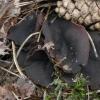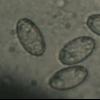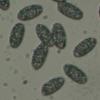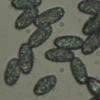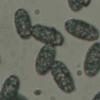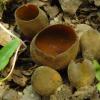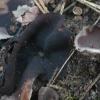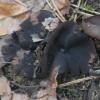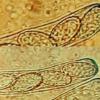
06-12-2025 00:19
 Viktorie Halasu
Viktorie Halasu
Hello, would anyone have this article, please? An

05-12-2025 17:33
 Bruno Coué
Bruno Coué
Bonjour, je serais heureux de recueillir votre avi

02-12-2025 18:59
This pair of ascos 2.5cm across were on recently b

02-12-2025 19:25
Buckwheat PeteHello, can anyone identify this hairy fungus growi

30-11-2025 12:53
 Edvin Johannesen
Edvin Johannesen
White short-stipitate apothecia found on thin twig

30-11-2025 10:47
 William Slosse
William Slosse
I recently found a collection of small Peziza sp.

Maybe compare with P. phyllogena (= P. badioconfusa)?

You should post the microphotos of ascospores in a higher resolution, because it's hard to correctly see the ornamentation. I don't believe in the hypotheses of P. phyllogena or P. boltonii.

I haven't met P. boltonii yet so I don't have experience with her. Last year I found Peziza which I finally decided to put on P. badioconfusa's website although I was thinking about P. boltonii. I don't know if it was right, because it was completely differently colored as found so far. The size of the spores, however, was appropriate for this species so I placed there.
See the last collection on this page: (2019.05.26)
Spores:
(18.4) 18.6 - 20.7 (21.3) × (9) 9.1 - 9.8 (10.2) µm
Q = (1.9) 1.92 - 2.2; N = 17
Me = 19.7 × 9.5 µm; Qe = 2.1
http://www.grzyby-pk.pl/gat_p/gat_peziza_badioconfusa.php
I do not know if I understood correctly, but you measured the dipped spores in Melzer (Melzer + Spores: 15.64-17.35 x 7.48-8.52 µm). If so, should their actual dimensions be 1-2 µm larger?
I don't use Melzer, I use Lugol. If the spores in Melzer have the same tendency to shrink as in Lugol then yours are much larger as you state?
Because the pictures do not see ornamentation and other features, which I mentioned earlier, identification is rather not possible?
Greetings from Poland
Mirek

The P. phyllogena (= P. badioconfusa) is very common in Hungary April-May also. This is another species.
Measuring my friend, also in water and no Melzer: Correctly Melzer +, Spores:...
15,5-17,3 x 7,71-8,4 µm.
Q= 1,84-2,1 N= 5
Me= 16,4 x 8,1 Qe= 2
Best wishes
Zoltan
